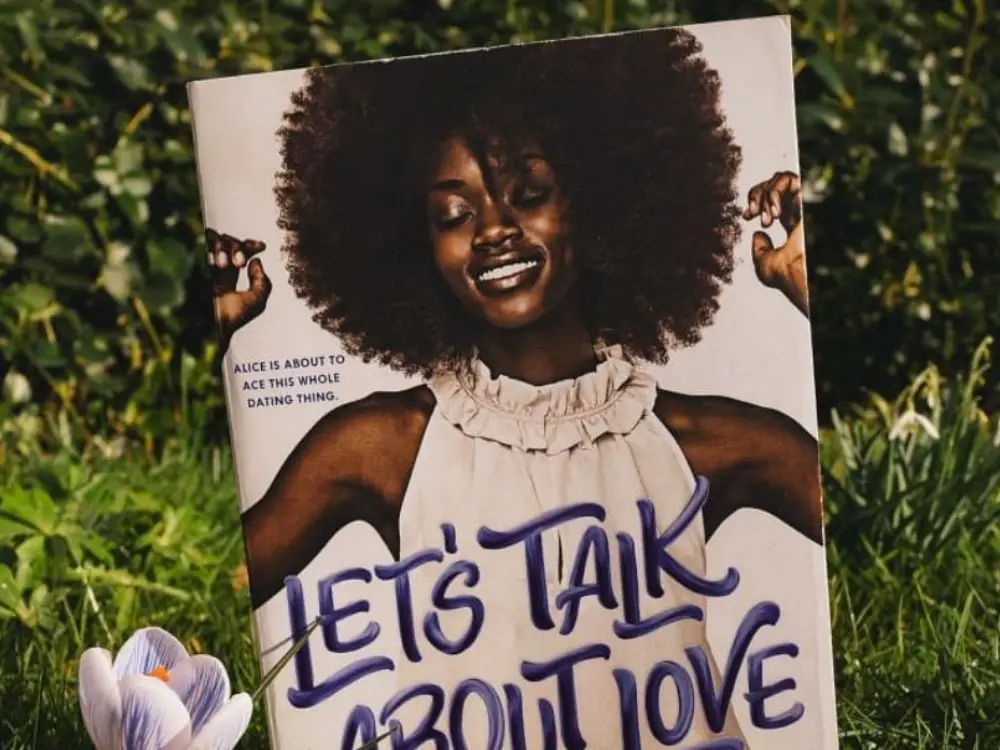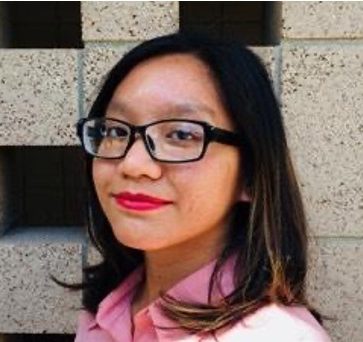“Let’s Talk About Love” tells the story of a black woman named Alice who identifies as biromantic asexual. During the week before finals, the college freshman gets dumped by her girlfriend Margot because of her asexuality. Despite that, she sets out to enjoy her first summer from college as a newly single person. She works at the local library to fund her tuition. At her workplace, she meets a cute guy named Takumi.
Through their interactions, Alice grows closer and wonders whether she should risk a romantic relationship. Along with this sense of doubt, Alice has to deal with familial pressures over her college major and friendship challenges as her two best friends become engaged. What can Alice do?
Claire Kann made her debut as an author with her young adult novel “Let’s Talk About Love” in 2018. The novel was first published online on Macmillan’s imprint Swoon Reads where it gained a large following. By the end of 2016, it was selected for traditional publishing by Swoon Reads.
Here are some reasons why you should add “Let’s Talk About Love” to your reading list.
“Let’s Talk About Love” Gives Representation to Women of Color
How often do you read novels where the protagonist is a woman of color? Did you go out of your way to find one? To be honest, I haven’t really read much. In August 2019, the Cooperative Children’s Book Center published their annual statistics on racial diversity in publishing for 2018. Out of the 3,653 books received at CCBC, 405 books were written about African/African Americans; fifty-five books were written about American Indians, 314 books were written about Asian Pacific/Asian Pacific Americans and lastly, 249 books were written about Latinx people. Altogether, 28% of the books in 2018 were written about people of color.
What does this mean? It means that these numbers don’t reflect the U.S. population. What’s worse is that only 22% of the books in 2018 were written by people of color. In Literary Hub, Deena ElGenaidi describes the phenomenon called the default of whiteness. “I didn’t realize it at the time, but this ever-present whiteness seeped into my mind so deeply that for me, a brown girl from Egypt, white became the default, and I was the other.” I was guilty of the same.
That’s why books like “Let’s Talk About Love” are so important. More diversity in publishing means more representation for the readers. The novel centers around the life of a young black woman; a young black woman wrote the novel. As I read the novel, I could relate to the double bias that women of color face: racism and sexism.
Bringing Visibility to the Asexual Spectrum
I started to wonder: How hard will it be to find a nonwhite female protagonist who identified themselves as asexual? Similar to my online search for nonwhite female protagonists, it took a while to find novels with asexual protagonists. Fortunately, “Let’s Talk About Love” popped up as a recommendation.
In the novel, Alice accepts her asexuality; however, she struggles to gain acceptance from those around her. She creates a system called the Cutie Code as a way for her to quantify attractive things from green (least attractive) to red (most attractive). The Cutie Code becomes a language to articulate appeal without sexual attraction.
Furthermore, she struggles with being an asexual black woman because black women are hypersexualized. In Wear Your Voice magazine, Sherronda J. Brown discussed her experience, saying, “My asexuality will never be separate from large endeavors to excavate Black sexuality from beneath dehumanizing white colonial interpretations, and I find myself deeply concerned with what little space there seems to be for Black asexual visibility in the face of our hypersexualization.”
Not only does Claire Kann’s novel bring visibility to asexuality, but also to women of color who identify as asexual, particularly black women. As mentioned before, women of color face twice as much bias for their race and sex. Queer women of color face even more.
Interracial Romance With a Nonwhite Love Interest
When it comes to interracial dating, people of color come across issues such as fetishization and colorism. BWWM — or Black Woman White Man — is one example. Jaedyn Guthrie talks about the issue of the white savior complex in interracial dating in Affinity Magazine: “White saviorism is not love, it is not respect, it is not admiration. White saviorism is racism. Who you are as a person does not make you less fortunate, or trapped, or lost. Your race does not indicate that you need to be saved, and nobody reserves the right to make you feel like you do.”
“Let’s Talk About Love” is refreshing because the male lead Takumi is Japanese American. In fact, he is proud of his heritage, distinguishing himself as Japanese American instead of Asian American. Claire Kann takes the time to tease out subtle details about Takumi’s character.
My favorite moment in the novel is when Takumi brings homemade dinner to Alice. He brings mapo tofu — my personal favorite dish of all time. It is a Chinese dish that consists of soft tofu cooked in chili paste with ground meat, green onions, garlic and ginger. This dish later became popularized in Japan, so it’s a common dish to make at home, like Japanese curry. This small detail is one of the reasons why I love the novel as it shows Kann’s extensive knowledge of her characters’ cultural backgrounds.
Final Thoughts
Overall, I truly enjoyed reading “Let’s Talk About Love” and wholeheartedly recommend this novel. She’s relatable in a way that many other protagonists aren’t. I also love Takumi’s character. Even though readers only perceive things from Alice’s perspective, there’s enough details that make me curious for more. For example, Takumi’s parents named his older brother Steven — an English name, whereas they named him Takumi — a Japanese name. I found that quite interesting and hoped to read a backstory about it.
If you want to read more books with asexual characters, I’d recommend checking out Claudie Arsenault’s database, in which she compiled a list of books with characters that fall in the asexual and aromantic spectrums.
Are you diversifying your reading?

















